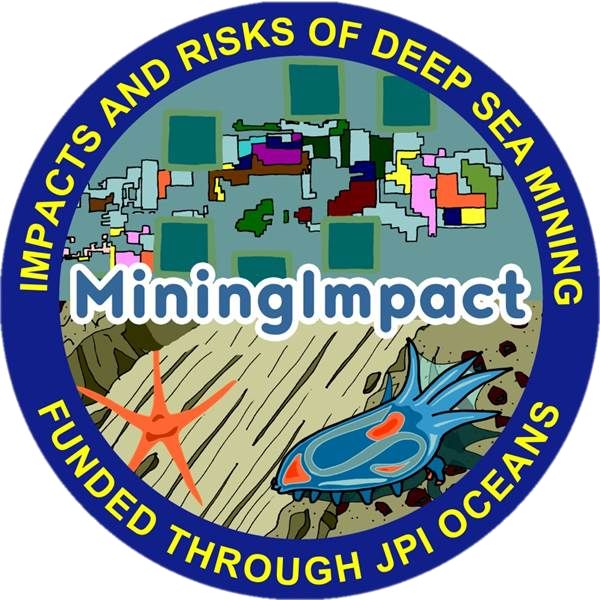Project phase 1: 2015-2017
Ecological Aspects of Deep-Sea Mining 2015-2017
Activities of deep-sea mining will indisputably affect the status of the environment by disturbing the seafloor and the overlying water column. The habitats of unique benthic and pelagic communities may be affected depending on the technologies used as well as on the size of the area impacted directly by mining and indirectly by the dispersion of sediment plumes and mining debris.
The JPI Oceans Pilot Action "Ecological Aspects of Deep-Sea Mining" assesses the ecological impacts which could arise from commercial mining activities in the deep-sea. Core of the project are three expeditions visiting several nodule license areas and a protected area in the Clarion Clipperton Zone (CCZ) as well as the disturbance and recolonization experiment (DISCOL) in the Peru Basin, which was conducted 26 years ago.
Background
During the last decades, the interest in exploring marine mineral deposits for their potential as commercial mining sites has fluctuated mainly due to market prices of metals. The main marine mineral deposits encountered in the deep-sea are cobalt-rich ferromanganese crusts on seamounts, massive sulfides at hydrothermal vents and manganese (or polymetallic) nodules in the abyssal plains. Commercially important manganese nodule fields are located in the Central Pacific and Indian Oceans. To date, the International Seabed Authority (ISA) has granted 12 licenses for the exploration of manganese nodule fields in the area between the Clarion and the Clipperton Fracture zones (CCZ) in the northeast Pacific and 1 license in the Indian Ocean. Several European countries, e.g. Belgium, Bulgaria, France, Germany, Poland, United Kingdom, currently hold exploration license areas in the CCZ. Three further applications for nodule exploration in the CCZ, including a second application from the UK, have been submitted to the ISA in 2013.
The Aim of the Project
The project aims to assess the recovery of the DISCOL experimental area in terms of the ecosystem status, and the biogeochemical situation of the area by comparing disturbed with adjacent undisturbed sites. Furthermore, the consortium will test a range of modern assessment methods and monitoring techniques for defining the ecosystem status and for improving the understanding of the spatial scales and natural dynamics of abyssal environments before and after anthropogenic disturbances. The methods are tested in two contrasting environmental and nodule-type regions (CCZ and Peru Basin). Therefore, the project aims to prove a robust investigation strategy for different baseline conditions in nodule areas. At the same time, the project intends to demonstrate that selected technologies are universally applicable for the monitoring of impacts that may be expected in different nodule areas. The working groups will focus on:
- modern mapping technologies
- the investigation of the biodiversity and community structure of benthic microbial and metazoan communities at disturbed and undisturbed sites in the DISCOL area as well as in several areas of the CCZ
- the employment of state-of-the-art TV-guided, targeted sampling and in situ measurement techniques
- the impact resulting from the release and dispersion of the sediment plume in the water column created by mining activities using modern high-quality and highresolution spatial and temporal hydrographic and sedimentological data as well as highresolution bathymetric data
- the dissemination of the project results to policymakers, stakeholders, and contractors holding exploration licenses. Furthermore, discussion will be initiated with industry interested in deep-sea mining to develop low-impact mining gear.

